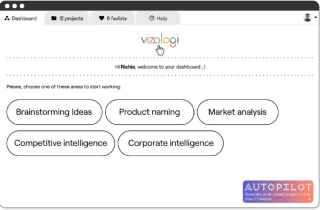Designing Mobile SaaS Products: From Business Model to UI Components
Mobile SaaS has grown into one of the most competitive product categories in the digital economy. Users expect seamless onboarding, transparent pricing, and frictionless design across devices, while businesses demand recurring revenue and expansion opportunities. Striking this balance is not only a question of strategy but also of execution: a well-thought-out business model must connect directly to the small interface components that shape user behavior.
When executed well, details such as a subscription picker or an onboarding flow become as critical to growth as pricing tiers or retention targets. In this discussion, we begin with the seemingly minor SwiftUI picker—a component that, when properly designed, embodies the larger principles of effective SaaS—and then expand to the architecture of business models, retention, and monetization flows that define long-term success.
SwiftUI Pickers: Precision In Small Decisions
Among the many tools developers use in SwiftUI, the SwiftUI Pickers are deceptively simple. It binds to a state property and allows users to make selections, whether choosing billing frequency, adjusting a filter, or setting personal preferences. But in SaaS, where revenue depends on reducing friction, the way a picker is styled can directly affect conversion.
Take subscription billing as a concrete example. A segmented picker that toggles between “Monthly” and “Annual” plans provides immediate clarity, allowing users to see pricing changes without navigating away. A well-designed menu picker, by contrast, works better for longer lists, such as selecting a workspace or region. Apple’s Human Interface Guidelines encourage developers to consider accessibility here: labels must remain clear at larger text sizes, VoiceOver must announce both context and selection, and choices must be localizable for global users.
Real-world products illustrate this with precision. Notion’s mobile paywall uses a simple toggle for billing cycles, updating the displayed price dynamically. Budgeting apps such as YNAB employ menu pickers in their filter views, letting users move effortlessly between “This Month,” “Last Month,” and custom ranges. These patterns show how a control as modest as a picker can hold the key to smoother user journeys, especially when paired with thoughtful defaults and persistent state storage across sessions.
Business Models Anchored In UI
No SaaS interface exists in a vacuum; every design decision serves the underlying revenue model. Freemium remains a dominant strategy because it lowers the barrier to adoption, but its success depends on the clarity with which premium features are positioned. A mobile SaaS app that buries its upgrade triggers behind confusing navigation risks never converts its free base, no matter how strong the feature set.
The architecture of pricing tiers must therefore be mirrored in UI. Productivity suites like Canva and Figma illustrate this well: free users enjoy core functionality but encounter carefully placed prompts when they attempt to collaborate more widely or exceed usage limits. At that moment, the interface seamlessly introduces the next tier, often with a picker that lets users choose how many seats or projects they need. Industry benchmarks reinforce the importance of these design decisions.
Research into SaaS retention shows that freemium models only succeed when the conversion event—the moment of perceived value—happens quickly and is supported by effortless upgrade flows. A picker that automatically defaults to the most common choice, such as a single-user plan, but allows quick expansion to multi-seat options can literally shape revenue outcomes.

Activation And Retention As Design Challenges
Retention is the ultimate test of SaaS design. Studies in 2024 highlighted that the average week-one retention for mobile apps dropped below 25%, while top-performing SaaS products retained users at more than double that rate. The difference rarely lies in feature sets alone. Instead, it comes down to how onboarding and recurring interactions are framed.
Activation begins the moment a user downloads the app. Lengthy forms, unnecessary permissions, or confusing defaults are silent killers of retention. Modern SaaS apps reduce this friction by employing native sign-in methods and guiding users with sensible defaults. A SwiftUI picker that opens on the most likely option, for example, removes hesitation and accelerates the journey to the first “aha” moment—whether that is sending a file, creating a project, or inviting a teammate.
Once activated, retention relies on habit. Fitness apps do this by reminding users of streaks, while project management tools highlight unfinished tasks. Each reminder is not just a push notification but a deliberate product strategy, ensuring users return before the natural decay of interest sets in.
Analytics platforms like Amplitude and Mixpanel have demonstrated repeatedly that nudging users toward repeat interactions within the first week strongly correlates with paid conversions later on. This reality means design is not a layer added to the business model; it is the business model in action.
Building SaaS Workflows Through Core Components
Successful SaaS workflows are constructed from a consistent set of UI components that users quickly learn to trust. Navigation bars anchor primary destinations such as dashboards, tasks, and settings. Lists form the backbone of browsing, while details are revealed through sheets or full-screen transitions to avoid disorientation. Forms, often dreaded by users, become tolerable—or even delightful—when enriched with toggles, prefilled text fields, and of course, well-styled pickers.
Paywalls represent one of the most critical screens in mobile SaaS, and their effectiveness depends on both structure and transparency. Apps like Dropbox and Trello demonstrate best practice by presenting billing cycles with segmented pickers, pairing them with comparison tables that highlight the advantages of upgrading.
Here, even the typography and spacing matter. Research into user behavior shows that clear, uncluttered layouts with obvious next steps increase conversion rates significantly, while ambiguity or hidden costs erode trust. Accessibility, too, is inseparable from conversion: a picker that truncates labels at larger text sizes or fails to communicate context through VoiceOver can alienate enterprise buyers who require compliance for procurement.

Photo by Austin Distel on Unsplash
Endnote
Designing mobile SaaS products is a matter of harmonizing business intent with interface precision. Small elements like SwiftUI pickers determine how easily users make decisions, while broader design frameworks shape activation, retention, and monetization. The success of freemium models depends not only on pricing tiers but on how those tiers are presented, how defaults guide behavior, and how accessible and performant the app feels in daily use.
In the end, growth is not achieved through business models alone, nor through UI polish in isolation, but through the careful integration of both. By aligning model and design, SaaS teams create products that feel intuitive to users and scalable for businesses—a synergy that turns everyday interactions into engines of sustainable revenue.

Vizologi is a revolutionary AI-generated business strategy tool that offers its users access to advanced features to create and refine start-up ideas quickly.
It generates limitless business ideas, gains insights on markets and competitors, and automates business plan creation.


